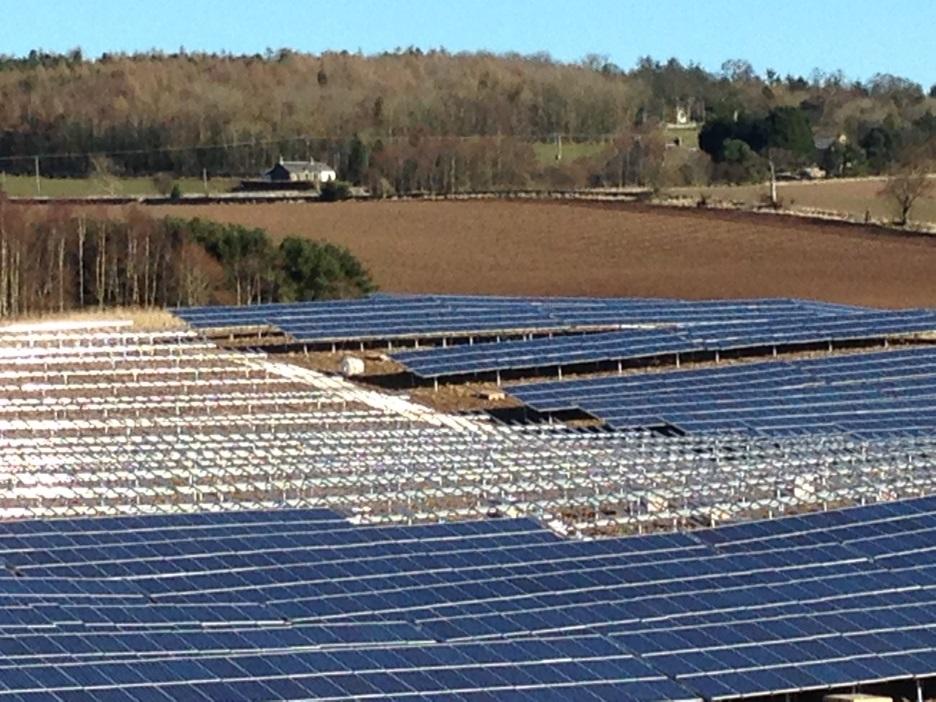Having had relatively modest additions of solar in the past few years, 2016 is set to be the year that solar deployment in Scotland hits the mainstream. This is being driven by the strong uptick in solar farms currently being finished this quarter, or scheduled for completion before 31 March 2017.
Previously, solar installations in Scotland were confined to a healthy flow of residential installations, both retrofit and new builds, covering private homes and social housing. The sector was also boosted by the farming community that was particularly active, especially during the initial UK growth phase of 2010 to 2012.
The big omission however was large-scale ground-mounted solar, with various factors coming into play here. This included the focus of developers on the south of England and the lack of grid connections in Scotland, largely resulting from the wind sector having secured most grid offers well before solar kicked off nationally in the UK.
During 2013 to 2015 however, as developers went further north in the UK, planning applications for solar farms saw a strong uptick. Many were still placeholders as certain parts of the country were known to have no free capacity until 2020 or beyond. However, things started to change at the end of last year, and this momentum has carried over strongly into 2016.
Until September 2015, Scotland had only two ground-mounted solar farms above 500kW in size, with nothing above 2MW. Each of these sites had also been largely driven by local initiatives and were not indicative of the solar farm explosion that had occurred south of the border.
Since October 2015, solar farms of 5MW in size (and higher) have started to come online, with several energising during March 2016 in time for 1.3ROC qualification. One of these sites, finished today, is shown below during the final stages of completion last Sunday.

Several multi-MW scale solar farms are due for completion during March 2016, adding significantly to the overall solar installed in Scotland by the end of 2016.
In fact, last Sunday was for many in Scotland (and across the country as a whole), the record solar day so far in 2016. For example, measurements from a residential installation (just 10 miles from the solar farm shown under completion in the above figure) rated at 3.9kWp clocked up more than 20kWh generation that day. Not bad for a day in February in the UK.
While operating until now on policies set up by Westminster, Scotland did have one curiosity of the 22 July 2015 announcement from DECC, that allowed for Holyrood to retain local decision-making on the grandfathering question that arose from DECC’s proposals then for the overall UK solar industry.
The net effect was that you could still put an application in after 22 July 2015 to one of Scotland’s LPAs and Holyrood would authorise grandfathering (as they inevitably decided to do, against overall UK decision-making policy from DECC on this issue for England and Wales) of the site under 1.3ROCs. Of course, you still had to get the planning application out of planning, discharge and build by 31 March 2016! That said, it was a possible loophole for developers to exploit, and our research shows that at least one site is set to benefit from the quirk in policy wording.
As more solar farms at the MW level come online in Scotland during 2016, it will add weight to the activities of STA Scotland in seeking to have increased emphasis put on solar directly out of Holyrood, and getting firmly behind the solar industry in Scotland, as a key local energy supply issue – and at a time when almost everything coming out of DECC would appear to be somewhat anti-solar or supportive in nature.
This year's Solar Power Portal Roadshows will be visiting Edinburgh on Thursday 17 March, offering unique insight and expertise on the solar market for installers, local authorities and end users. For more information, and to register for free, click here.

